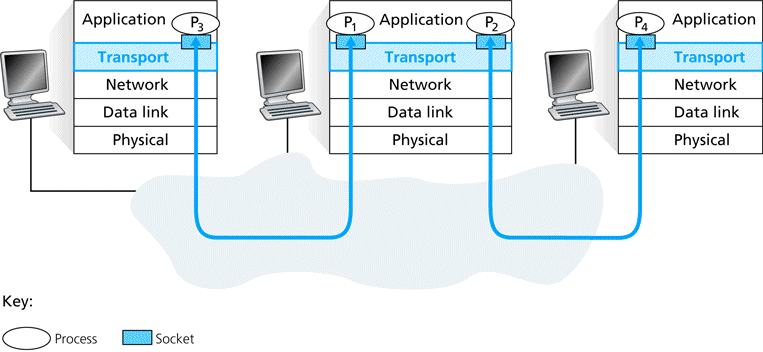Difference Between Multiplexing and Demultiplexing in Computer Networks
Multiplexing is method or technique in which more than one signals are combined into one signal that travels on a medium. These segments contain the source port number destination port number header files and data.

Computer Networking Computer Networking A Top Down Approach Featuring The Internet 计算机网络 自顶向下方法与 Internet 特色 Chapter3 Transport Layer Ppt Download
Segmentation is the division of packets across the network for example from Location A to location B and multi plexing is the interleaving of pieces when transversing trough different media.

. Both devices work on both ends of the path. Multiplexing follows many-to-one ie n input lines and one output line. De-multiplexing is reverse of multiplexing.
Multiplexing and Demultiplexing for TCP. Difference Between Multiplexer and Demultiplexer. Multiplexing is method or technique in which more than one signals are combined into one signal that travels on a medium.
Usually modulation is done after multiplexing. This happens when the data transmission rate of media is greater than that of the source and each signal is allotted a definite amount of time. It have so many inputs one output.
A Multiplexer accepts multiple inputs of data but provides only a single output. Multiplexing handles the data from multiple sockets and adds a transport layer header encapsulating the data so that it can be receivedread for demultiplexing. Modulation is using a career signal to send information whereas multiplexing is a way of combining multiple signals.
In this technique hardware like multiplexer or MUX plays a key role in achieving multiplexing. Demultiplexing Delivering received segments at receiver side to the correct app layer processes is called as demultiplexing. Demultiplexing is the receiving of the encapsulated data in the header to read the header and determine which socket to send it to.
In multiplexing two devices are mainly used. A multiplexer merges signals of. In this method a multiplexed signal is again decomposed in individual signals.
DEMUX separates a signal into its component signals one input and n outputs. Header Files and Data. Demultiplexing is totally reverse of multiplexing in demultiplexing a signal is again decomposed in individual signals.
A multiplexer and a demultiplexer. Gathering data from multiple application processes of the sender enveloping that data with a header and sending them as a whole to the intended receiver is called multiplexing. To accomplish this it is necessary to multiplex tran View the full answer.
Demultiplexing is the reverse of multiplexing in which a multiplexed. In this lecture student wili learn about the detail of multiplexing Frequency division multiplexingTime division multiplexing Wave division multiplexing F. These Segments are passed to the Network Layer which adds the source destination IP address to get the Datagram 13 14.
These slots are so small that all transmissions appear to be parallel. These Segments contains - Source Port No. What is multiplexing and demultiplexing What is the socket What is UDP AND TCP WHAT is checksum What is the difference between rdt 10 20 21 22 and 30 Slide 42 43 44 What is the stop and wait Explain GBN in action receiver sender window N4 sender 012345678 send pkto 012345678 send pkt 1 0123.
In modulation wave properties are varied in order to represent the signal whereas in multiplexing wave parameters are shared for multiple channels. In Multiplexing at the Transport Layer the data is collected from various application processes. See answer 1 Best Answer.
Multiplexing Multiplexing in Computer Networks. Multiplexing in computer networks is one kind of method used to merge and transmit several data signals above a single medium. The technique reduce number of channels of electrical connections for the transmission of multiple signals.
A multiplexing-demultiplexing service is needed for all computer networks. The device that does multiplexing can be simply called as a MUX while the one that reverses the process which is demultiplexing is called as DEMUX. Delivering received segments at the receiver side to the correct app layer processes is called demultiplexing.
Difference Between Multiplexing and Demultiplexing Actually you can see the difference between multiplexing and demultiplexing in essence from their definitions. Multiplexing Gathering data from multiple application processes of sender enveloping that data with header and sending them as a whole to the intended receiver is called as multiplexing. Time Division Multiplexing TDM.
Demultiplexing is achieved by using a device called Demultiplexer DEMUX available at the receiving end. A multiplexer works on the transmitting side and a demultiplexer works on the receiving side. In frequency division multiplexing all the signals operate at the same time with different.
TCPIP is designed to allow many different applications to send and receive data simultaneously using the same internet protocol software on a given device. Multiplexing and demultiplexing in transport layer means extending the host-to-host delivery service provided by the network layer to a process-to-process delivery service for applications running on the hosts. The process of multiplexing divides a communication channel into several number of logical channels allotting each one for a different message signal or a data stream to be transferred.
Multiplexer merges n input lines for producing an only output line. These segments are passed to the Network Layer which adds the source and destination IP address to get the datagram. 5678 send pkt2 012345678 send pkt3 wait.
A Demultiplexer accepts just a single input but directs it through multiple outputs. Multiplexing is achieved by using a device called Multiplexer MUX that combines n input lines to generate a single output line. Multiplexing The Transport Layer at source collects data from various application process.

Multiplexing In Computer Network Javatpoint
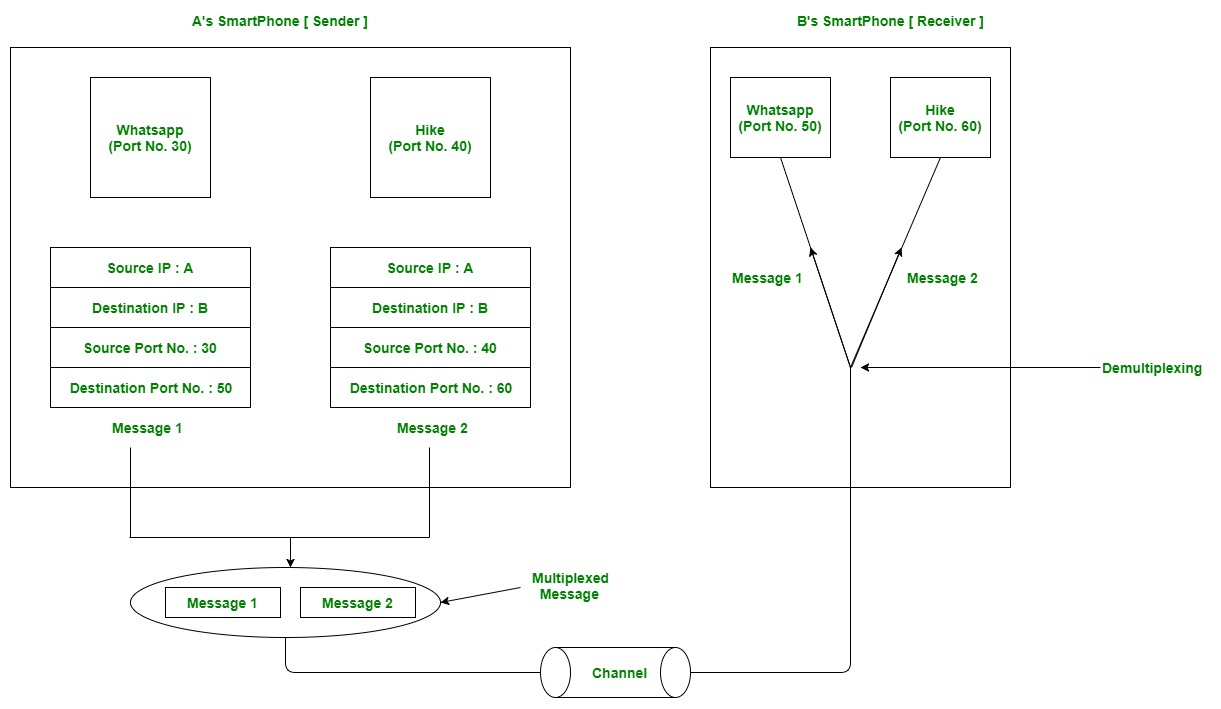
Multiplexing And Demultiplexing In Transport Layer Geeksforgeeks

What Is Multiplexing What Is Demultiplexing Mux And Demux In Urdu And Hindi Youtube

Brief Overview Of Multiplexing Data Communication And Computer Networks Lecture Slides Docsity
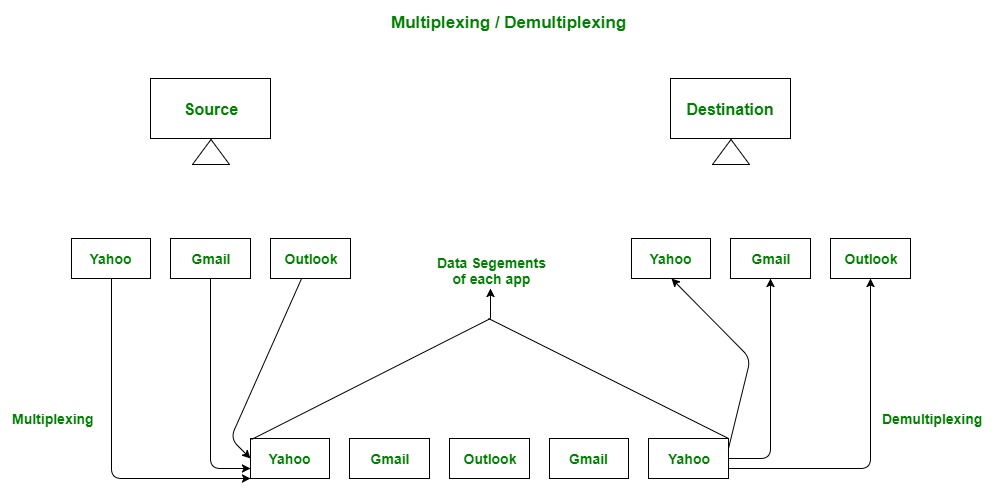
Multiplexing And Demultiplexing In Transport Layer Geeksforgeeks

Multiplexing Demux Ppt Download
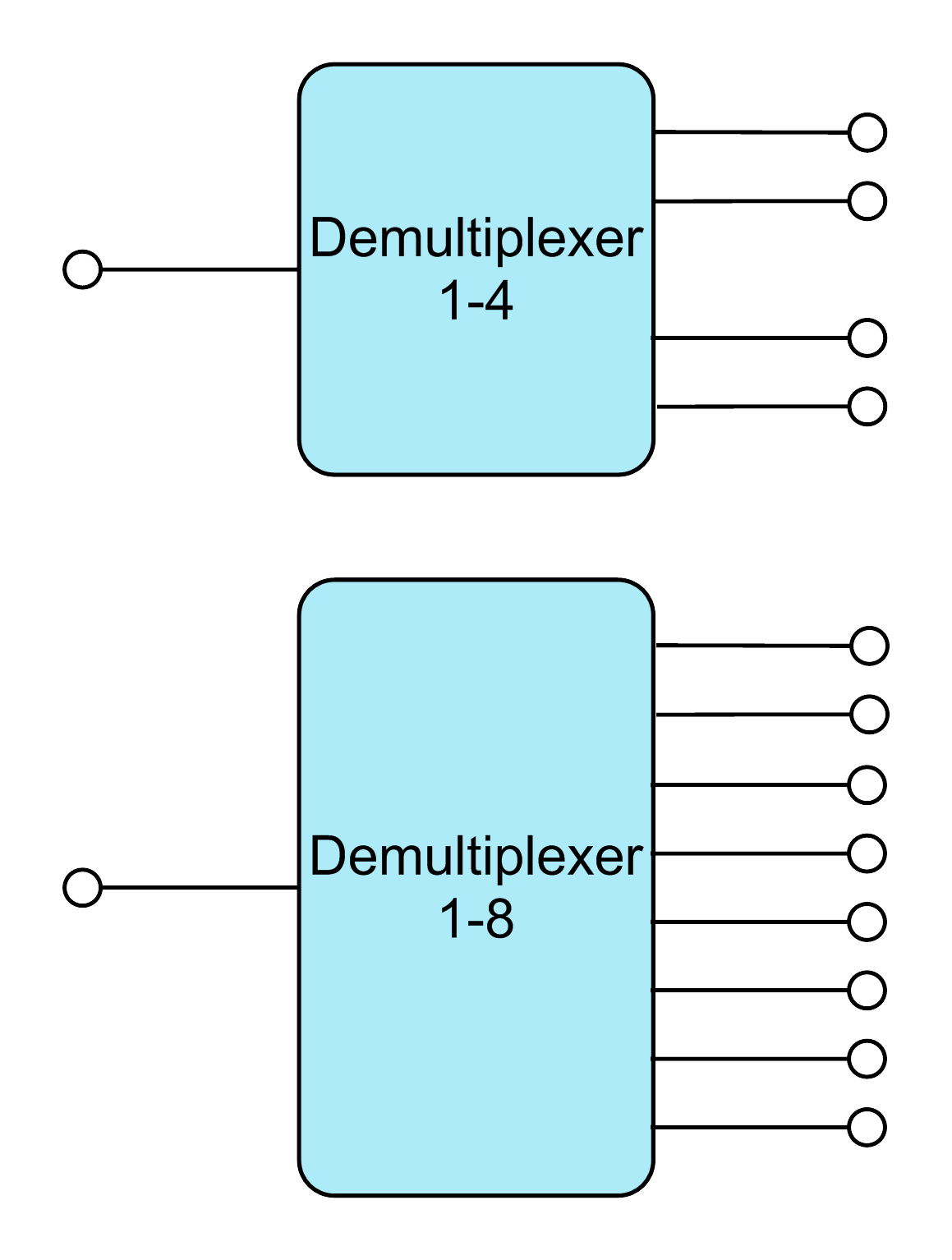
Difference Between Multiplexing Demultiplexing Ahirlabs

Connection Multiplexing Explained With Examples
Computer Network Transportation Layer By Rahul Singh Sengar Medium

07 Transport Layer Multiplexing And Demultiplexing Part 6 Computer Networks For All
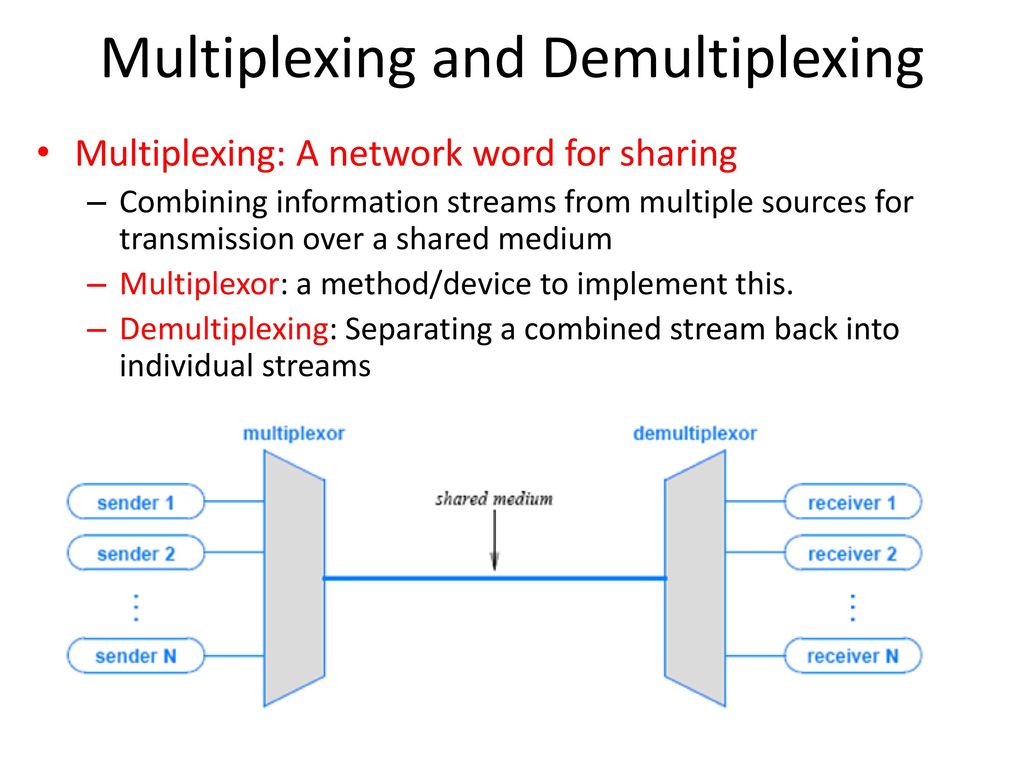
Multiplexing And Demultiplexing Ppt Download

Transport Layer Multiplexing And Demultiplexing Youtube

Multiplexing And Demultiplexing In Transport Layer Electronics Post

Difference Between Multiplexer And Demultiplexer Propatel
Multiplexing And Demultiplexing What Are They And Their Differences
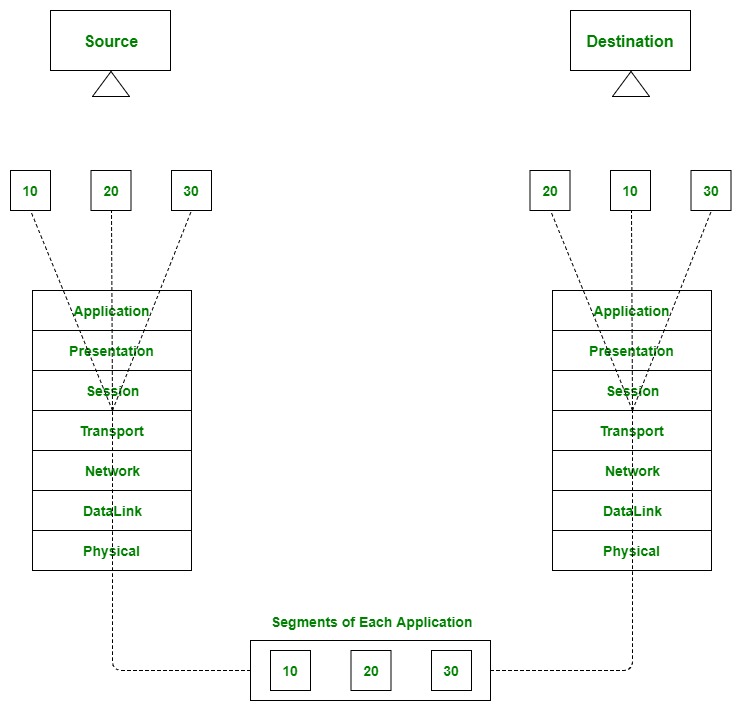
Multiplexing And Demultiplexing In Transport Layer Geeksforgeeks

How Does Multiplexing And Demultiplexing Work In Tcp Ip Protocol Quora
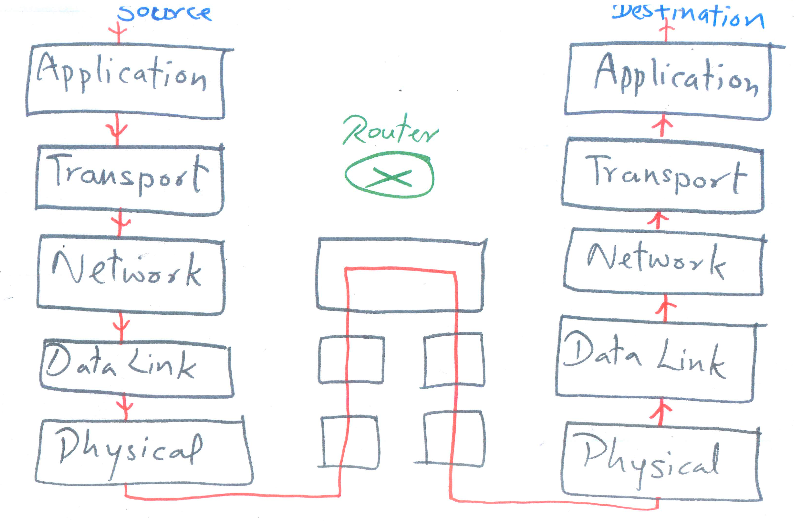
Transport Layer Multiplexing And Demultiplexing By Rukshani Athapathu Coder S Corner Medium
